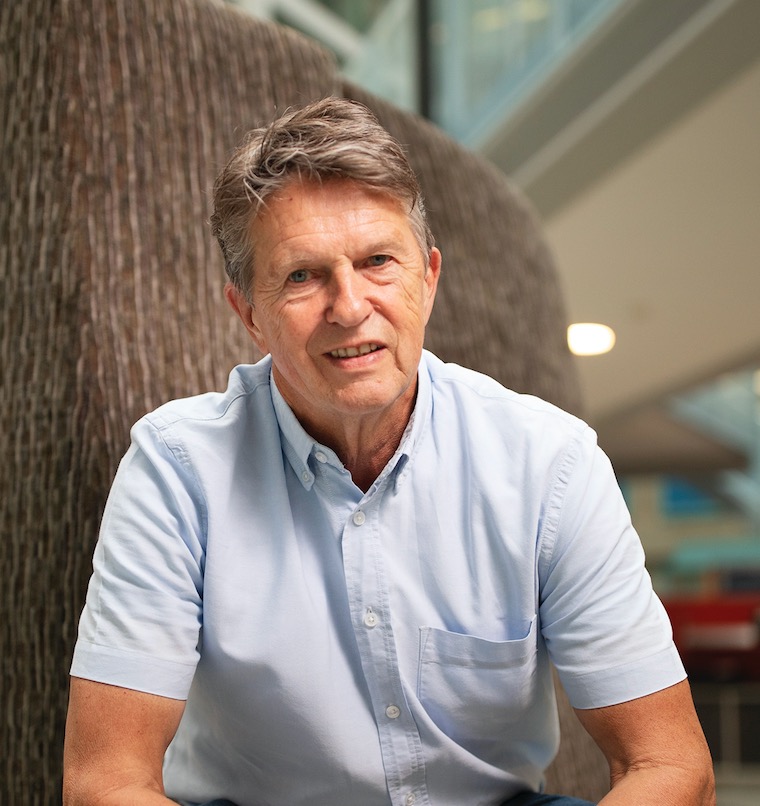https://doi.org/10.55788/5d99c41c
The DETERMINATION trial (NCT01208662) randomised 729 newly diagnosed patients with MM (Black/African American 18.8%; White 76.4%) 1:1 to RVd alone or RVd plus ASCT [1]. The primary outcome of progression-free survival (PFS) showed that patients in the RVd plus ASCT arm had a significant benefit over patients in the control arm, with a median PFS of 67.5 months versus 46.2 months (HR 1.53; P<0.0001) [2]. “MM is a heterogeneous disease and newly diagnosed patients with MM are diverse,” Dr Hani Hassoun (Memorial Sloan Kettering Cancer Center, NY, USA) pointed out. “Therefore, we need to investigate whether one size fits all.” A subgroup analysis for PFS was performed to gain insights into this matter.
“Although most subgroups appeared to benefit from a transplant, some subgroups need to be considered,” continued Dr Hassoun. The benefit of transplant may be more apparent in White participants (HR 1.67; 95% CI 1.29–2.15) compared with Black/African American participants (HR 1.07; 95% CI 0.61–1.89). Also, those with a BMI <25 (HR 2.60; 95% CI 1.56–4.31) displayed a more pronounced advantage of transplant than those with a BMI between 25 and 30 (HR 1.24; 95% CI 0.86–1.80) or those with a BMI ≥30 (HR 1.41; 95% CI 0.98–0.02). Finally, patients with revised MM international staging system (R-ISS) III (HR 0.96; 95% CI 0.43–2.13) may have less benefit from transplant than those with R-ISS II (HR 1.63; 95% CI 1.22–2.19) or R-ISS I (HR 1.38; 95% CI 0.90–2.12). However, Dr Hassoun mentioned that R-ISS status and race were independent prognostic factors for PFS, favouring R-ISS I over R-ISS II and III in both arms and favouring Black over White in the RVd alone arm.
“We observed that there may be a differential impact of baseline prognostic factors on the treatment that is applied, potentially indicating differences in myeloma pathobiology within certain subgroups,” explained Dr Hassoun. “These data could help to differentiate patients who would benefit from ASCT, especially in the context of newer immunotherapies,” he decided.
- Hassoun H, et al. Response rates and outcomes in newly diagnosed multiple myeloma patient subgroups receiving RVd + ASCT plus lenalidomide maintenance until progression in the phase 3 DETERMINATION trial. OS02-08, European Society for Blood and Marrow Transplantation (EBMT) 49th Annual Meeting, 23–26 April 2023, Paris, France.
- Richardson PG, et al. N Engl J Med 2022;387:132–147.
Copyright ©2023 Medicom Medical Publishers
Posted on
Previous Article
« Quizartinib plus chemotherapy improves OS in patients with AML undergoing ASCT Next Article
ASCT or CAR T cell as first-line therapy for MM? »
« Quizartinib plus chemotherapy improves OS in patients with AML undergoing ASCT Next Article
ASCT or CAR T cell as first-line therapy for MM? »
Table of Contents: EBMT 2023
Featured articles
CAR T cells rise to the front in multiple myeloma
Acute Leukaemia
Quizartinib plus chemotherapy improves OS in patients with AML undergoing ASCT
Blinatumomab may improve outcomes in patients with B-cell ALL undergoing ASCT
Is ASCT a reasonable option in patients with invasive aspergillosis?
Tacrolimus versus cyclosporine A in AML
Promising novel target identified for AML
Multiple Myeloma
Ide-cel superior to standard therapies in triple-class exposed RRMM
ASCT or CAR T cell as first-line therapy for MM?
DETERMINATION: Does one size fit all in multiple myeloma?
Graft-Versus-Host Disease
New options to treat steroid-refractory chronic GvHD
New developments in steroid-refractory acute GvHD
Miscellaneous Topics
Long-term success for CD19 CAR T-cell therapy in CLL
Can molecular data improve prognostication in MDS patients undergoing HSCT?
Next-generation cell therapies for cancer: CAR-NK cells
Novel drugs and strategies around ASCT for Hodgkin lymphoma
Thalassaemia: Advances in conventional transplantation and gene therapy
Related Articles

June 15, 2023
Letter from the Editor
© 2024 Medicom Medical Publishers. All rights reserved. Terms and Conditions | Privacy Policy

